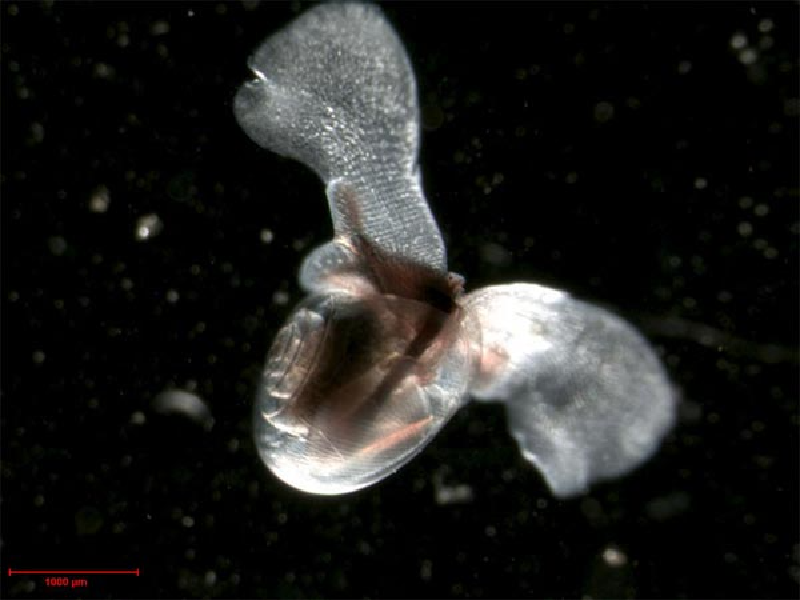Video—Swimming Snails Use Insect-like Flapping
The Antarctic pteropod, or “sea butterfly,” is a millimeter-sized aquatic snail that propels itself upward through the water by flapping a pair of parapodia (wings) that are as large as its shell. Donald Webster and his colleagues at the Georgia Institute of Technology in Atlanta previously analyzed the creature’s unusual flapping pattern—the animal tips over with each half-cycle of wing flapping, so that every stroke is downward and contributes to the upward propulsion.
In the team’s latest work, they found that the flapping can only lift the pteropod’s weight if the wing motion reaches a critical Reynolds number, meaning a certain speed that depends on the water’s viscosity and the size of the individual. Otherwise, the pteropod can’t tip over sufficiently after each stroke. The team derived this limit by comparing the Reynolds numbers for pteropods that could and could not lift themselves by flapping.
The researchers also computed another parameter, called the Strouhal number, which is the ratio of the vertical distance traveled by the tip of the wing during a flapping stroke to the speed of the animal through the water. The observed pteropod value of about 0.3 is similar to that found for birds and flying insects.
Ocean acidification caused by increasing atmospheric carbon dioxide results in thinner pteropod shells and thus lighter bodies, so Webster and his colleagues say that climate change may have noticeable effects on swimming patterns. They suggest that monitoring these sea creatures could provide one way to identify effects of acidification.
This research is published in Physical Review Fluids.
–David Ehrenstein
David Ehrenstein is a Senior Editor for Physics Magazine.





